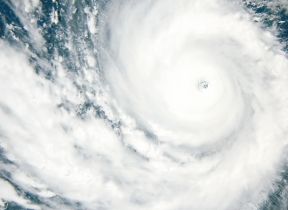Measuring tropical cyclones
In order to categorise tropical cyclones around the world, the Saffir-Simpson Hurricane Wind Scale is used defining events by their wind speed and impacts.
Although developed in the USA, tropical cyclones around the world are measured by the Saffir-Simpson Hurricane Wind Scale which originated from 1971 with Herbert Saffir, a civil engineer and Bob Simpson of the US National Hurricane Center.
The Saffir-Simpson Hurricane Wind Scale consists of a five point scale of hurricane intensity and starts at 74 mph. Tropical cyclones with wind speeds up to 38 mph are classified as tropical depressions and those with wind speeds from 39 - 73 mph are classified as tropical storms.
It is important to note that whilst the Saffir-Simpson Hurricane Wind Scale defines wind strengths and their likely impacts, severe impacts from tropical cyclones can also occur due to storm surge and heavy rain which are not necessarily directly related to the strength of the wind in the tropical cyclone.
Saffir-Simpson Hurricane Wind Scale
Category 1
Wind (mph): 74 - 95
Damage: Minimal - No significant structural damage, can uproot trees and cause some flooding in coastal areas.
Category 2
Wind (mph): 96 - 110
Moderate - No major destruction to buildings, can uproot trees and signs. Coastal flooding can occur. Secondary effects can include the shortage of water and electricity.
Category 3
Wind (mph): 111 - 129
Extensive - Structural damage to small buildings and serious coastal flooding to those on low lying land. Evacuation may be needed.
Category 4
Wind (mph): 130-156
Extreme - All signs and trees blown down with extensive damage to roofs. Flat land inland may become flooded. Evacuation probable.
Category 5
Wind (mph): greater than 156
Catastrophic - Buildings destroyed with small buildings being overturned. All trees and signs blown down. Evacuation of up to 10 miles inland




